TABLE 14-16
What are the factors that determine the acceleration time (in sec.) from 0 to 60 miles per hour of a car? Data on the following variables for 171 different vehicle models were collected:
Accel Time: Acceleration time in sec.
Cargo Vol: Cargo volume in cu. ft.
HP: Horsepower
MPG: Miles per gallon
SUV: 1 if the vehicle model is an SUV with Coupe as the base when SUV and Sedan are both 0
Sedan: 1 if the vehicle model is a sedan with Coupe as the base when SUV and Sedan are both 0
The regression results using acceleration time as the dependent variable and the remaining variables as the independent variables are presented below.
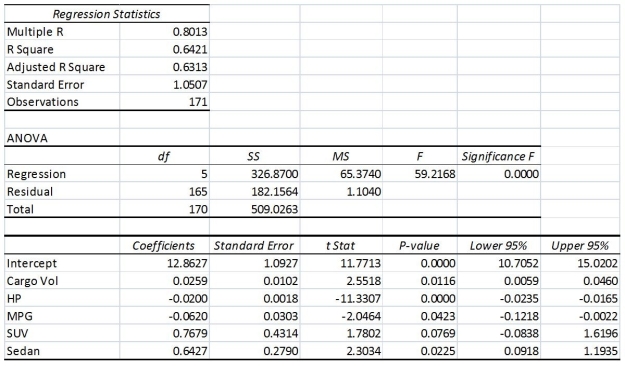
The various residual plots are as shown below.
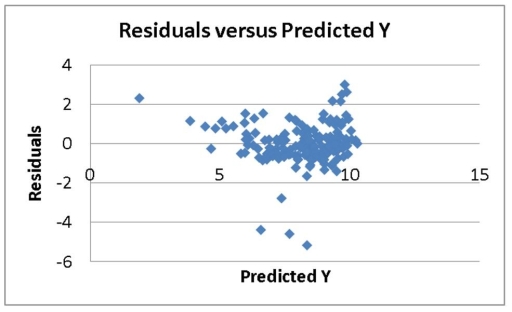
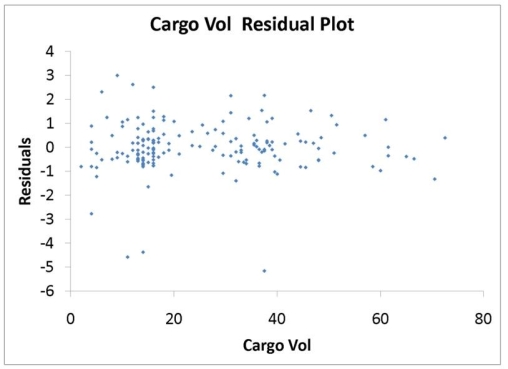
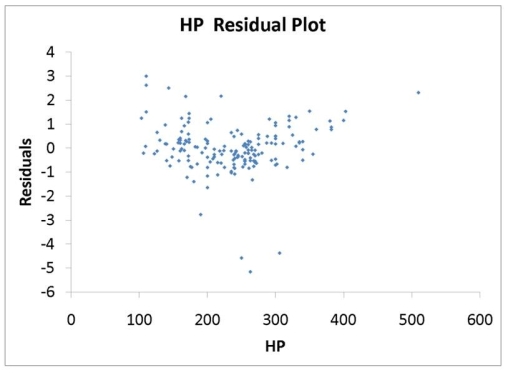
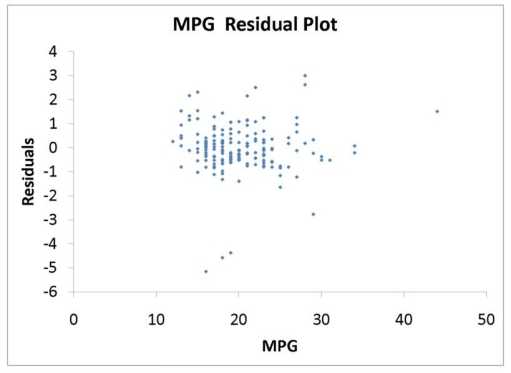
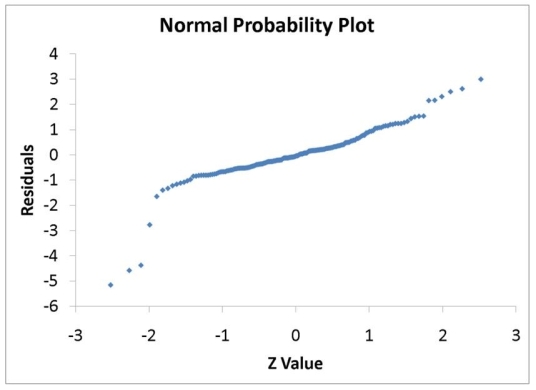

-Referring to 14-16, there is enough evidence to conclude that Cargo Vol makes a significant contribution to the regression model in the presence of the other independent variables at a 5% level of significance.
Definitions:
Marginal Cost
The financial outlay required to create another unit of a good or service.
Average Total Cost
The total cost of production (fixed plus variable costs) divided by the number of goods produced, essentially the per unit production cost.
Average Variable Cost
The total variable costs (like materials and labor) divided by the quantity of output produced, indicating the cost of producing each unit.
Fixed Capital
Long-term assets used in the production of goods and services, such as buildings, machinery, and equipment.
Q4: Referring to Table 15-2, is the overall
Q34: Referring to Table 17-4, what is the
Q77: If you want to recover the trend
Q98: Referring to Table 17-4, what is the
Q129: Referring to Table 14-17 Model 1, estimate
Q168: Referring to Table 14-5, at the 0.01
Q170: Referring to Table 13-13, the decision on
Q207: Assuming a linear relationship between X and
Q262: Referring to Table 14-6, what is your
Q351: In a multiple regression problem involving two